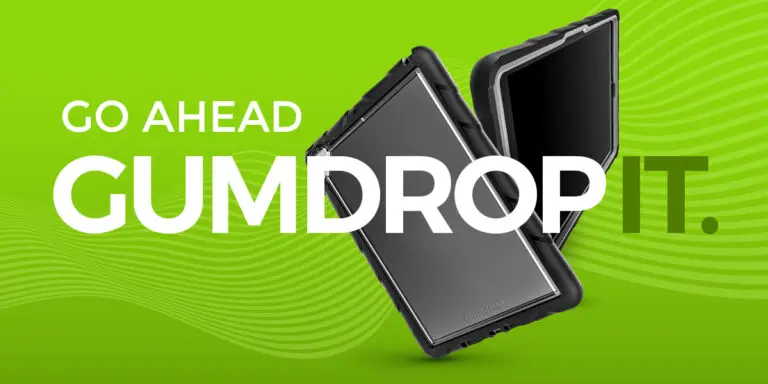
Headphones and headsets have long been a part of the K-12 learning experience. But these handy accessories are no longer confined to language learning labs, libraries or teacher’s supply closets. As school districts have had to shift to distance learning during the pandemic and revamp student technology needs, headphones and headsets have become essential to learning and keeping kids connected to teachers and classmates. Now and moving forward post-pandemic, headphones are being included in student tech stack along with devices (Chromebooks, iPads, laptops), cases, and other accessories.
Remote learning scenarios have created multiple challenges for testing, learning and communicating – whether kids are in class or at home. Parents with multiple school-aged children can attest to the fact that several remote classes going on in one space creates a lot of audio confusion. Plus, now there is a need for headphones to do more than just listening, so incorporating additional features like microphones, or noise canceling properties are important and they still need to be able to stand up to harsh student handling.
Of course, audio needs required for testing, lab work and traditional uses hasn’t gone away completely. Standardized tests are coming back later this Spring in some districts and in various forms so tech teams are contemplating requirements for headphones vs headsets and the use cases associated with each.
PHONES, SETS OR BUDS?
Just as decision makers must evaluate the best tablet or laptop for their student body, there are several options to consider when choosing audio accessories. According to our recent survey of K-12 decision makers, headphones enjoy the largest market share, making up 53% of deployments. Headsets are next(24%) followed by earbuds (23%), which tend to have built-in microphones, but are not optimal for student or classroom use.
While most teens use earbud-style headphones in their personal life, younger children’s ears are often too small for such devices. Earbuds are also a leading cause of cracked screens (along with pens/pencils) when left on the keyboard and closed shut. Experts recommend over-the-ear headphones and headsets both to accommodate different ear sizes and to help block out external noise. Additionally, earbuds tend to be cheaper than headphones and sets but their longevity is often much shorter. A smaller investment up front can result in ongoing expenses down the line.
Over-the-ear sets also win out in the sanitation department. If students are sharing sets, in-ear devices are a big no-no! Cleaning and sanitizing is sure to be on every districts’ mind, even after the immediate COVID-19 threat has passed. At Gumdrop, all of our headphones and headsets come with durable earpads that easily wipe clean, which is great for shared sets… and not a bad idea even if students have their own!
As for microphone headsets vs. regular headphones? That’s a decision that requires some foresight. Think about your educational goals and upcoming device purchasing plans. Does your hardware and software require a microphone? Best to plan ahead and go with headsets. Outfitting a listening lab or planning for standardized testing? Regular headphones might do the trick.
CAN THEY KEEP UP WITH YOUR STUDENTS?
Unlike personal audio equipment, school-provided headphones and headsets need to be student-proof. Younger children can be especially hard on delicate headphones and sets, twisting the headbands and playing with the cords. Even older students might toss their pair to the bottom of their backpack and inflict some damage.
74% of our survey respondents report replacing annually or even more often. The reason? Almost half stated normal wear and tear (47%) and damage from students (46%). Typical headphones “made for kids” fall to pieces in months during school deployment. With that in mind, Gumdrop designed ours specifically for student use and can withstand 4-foot falls, headphone twisting and bending, and cord damage. The braided, 4–foot long cord even stands up to biting, pulling, and tangles.
WHO’S WHO?
Unlike iPads and Chromebooks, name brands don’t rule the headphone and headset market. In general, decision makers consider price and durability over branding. They also look for key features, like USB compatible cords and in-line volume adjusters. Often these features aren’t available with the cheapest models, but might be worth the investment depending on your needs.
THE BOTTOM LINE
70% of respondents said they expected to increase headphone and headset usage in schools in the next five years. That’s a lot of purchasing! So getting even one extra year of use from your headphones and headsets is a major win for your budget.
Choosing the right audio accessories can be tough, especially with so many options available on the market. As with every decision you make in tech deployment, fully understanding your needs and goals will help you avoid sinking money into fragile or incompatible models.
Gumdrop offers DropTech headphones and headsets with investment protection in mind – offering a one-year warranty so tech buyers know their students will stay connected no matter what. Plus, we partner with device manufacturers such as Dell, HP so all of your tech needs can be bundled into a complete solution package at once and on one purchase order!
So go ahead. Gumdrop IT!



